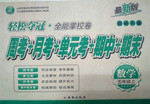题目内容
1.Disease,poverty,hate,love-Charles Dickens'stories opened his readers eyes to the most important themes of his age.Two hundred years on,his stories still speak volumes across the world,proving that Dickens'legacy(遗产)was far greater than just"great-literature".February 7marks the 200th anniversary of the writer's birthday.To mark this date,BBC writer Alex Hudson listed six things Dickens gave the modern world.Let's take a look at two of them.
A White Christmas
Dickens is described as"the man who invented Christmas"-not the religious festival,but the cultural aspects that we associate with the festive season today.
In the early 19th century,Christmas was barely worth mentioning,according to critic and writer Leigh Hunt.The committee which ran the Conservative Party even held ordinary business meetings on Christmas Day-unthinkable in the West nowadays,when everyone but the most necessary workers takes at least three days off.
Many people believe that Dickens'popular descriptions of the festive period became a blueprint for generations to come.In his classic novel,A Christmas Carol,he not only put forward the idea of snow at Christmas,but also painted a picture of glowing warmth-"home enjoyments,affections and hopes".
In his biography of Dickens,Peter Ackroyd wrote:"Dickens can be said to have almost single-handedly created the modern idea of Christmas."
"Dickens"poverty(贫穷)
Dickens was one of the first to take an honest look at the underclass and the poor of Victorian London.He helped popularize the term"red tape" to describe situations where people in power use needless amounts of bureaucracy(官僚作风) in a way that particularly hurts the weaker and poorer members of society.
"Dickensian"has now become a powerful word for describing an unacceptable level of poverty.In 2009,when the president of the Association of Teachers and Lecturers in the UK wanted to talk about poverty in some areas of Britain,she did not use words like"terrible"or"horrific",but rather described it as"life mirroring the times of Dickens".
8.The article is mainly aboutB
A.a brief introduction to Charles Dickens
B.Charles Dickens'influence on the world
C.the characters in Charles Dickens'stories
D.Charles Dickens'achievements in literature
9.Why is Dickens called"the man who invented Christmas"?C
A.Because he created both religious and culture festival.
B.Because all his novels have something to do with Christmas.
C.Because one of his novels helped to shape Christmas celebrations.
D.Because he was the first man to have proposed celebrating Christmas.
10.According to the article,the phrase"red tape"refers toD.
A.rules or procedures that are required to accomplish a task
B.a situation in which poor members of society are hurt.
C.conflict between people in power and weaker people
D.pointlessly time-consuming official procedures
11.We can learn from the passage thatB.
A.Dickensian is widely used to describe the Christmas
B.Charles Dickens'novels reflect the true life at his age
C.Every person can take three days off for Christmas
D.The theme of Charles Dickens'stories is about poverty.
分析 文章介绍了狄更斯对现代社会的两个重要影响.
解答 8.B主旨题:从第二段第二句:To mark this date,BBC writer Alex Hudson listed six things Dickens gave the modern world.为纪念这个日子,BBC作家亚历克斯•哈德逊列举了狄更斯带给现代世界的六件事,可知主要讲的是狄更斯对整个世界的影响,故选B.
9.C细节题:由第五段"he not only put forward the idea of snow at Christmas,but also painted a picture of glowing warmth-"home enjoyments,affections and hopes"."他不仅提出了圣诞节雪的想法,还描绘出一幅温暖发光的图画"家庭中的生活、感情和希望"以及第六段"Dickens can be said to have almost single-handedly created the modern idea of Christmas."狄更斯可以说一手创造了现代圣诞节.故选C.
10.D推断题:由倒数第二段"He helped popularize the term"red tape"to describe situations where people in power use needless amounts of bureaucracy (官僚作风) in a way that particularly hurts the weaker and poorer members of society."可知red tape的意思是官方办事时的繁文缛节,故选D.
11.B推断题:由Two hundred years on,his stories still speak volumes across the world,proving that Dickens'legacy(遗产) was far greater that just"great-literature"两百年过去了,他的故事仍在世界范围内意义深远,证明了狄更斯的遗产不仅仅只是伟大文学而已.故选B.
点评 在阅读时要抓住文章的主题和细节,分析文章结构,根据上下文内在联系,挖掘文章的深层含义,对于暗含在文章中的人物的行为动机,事件中的因果关系及作者未言明的倾向、意图、态度、观点等要进行合乎逻辑的判断、推理、分析,进一步增强理解能力,抓住材料实质性的东西.

 轻松夺冠全能掌控卷系列答案
轻松夺冠全能掌控卷系列答案